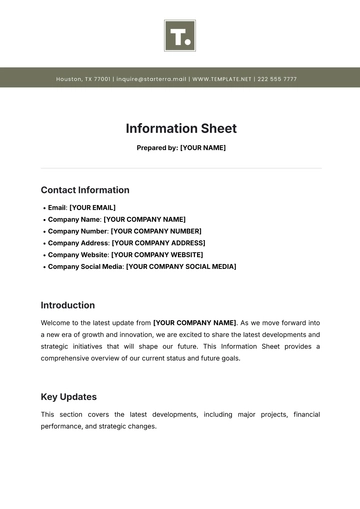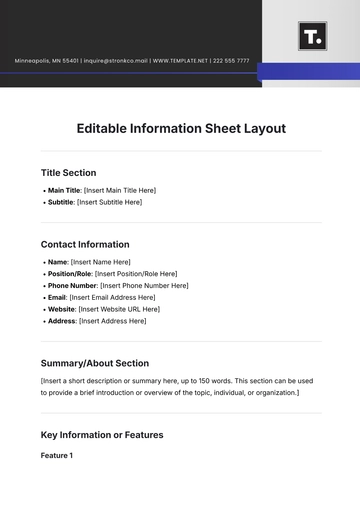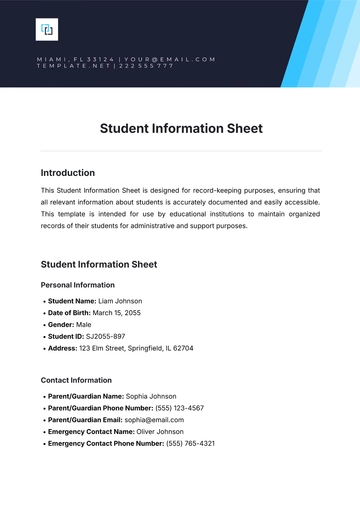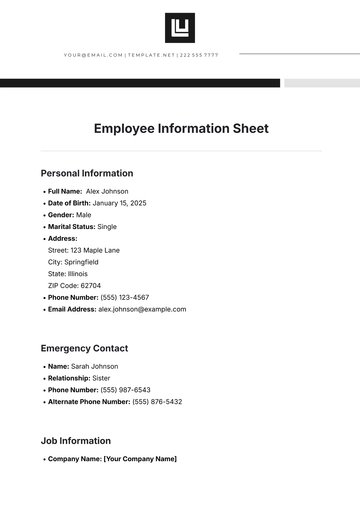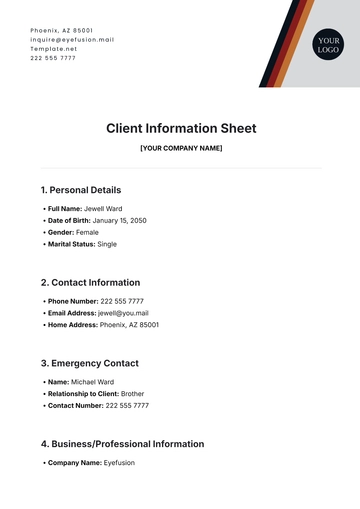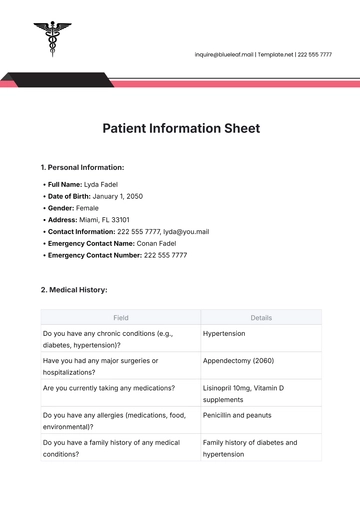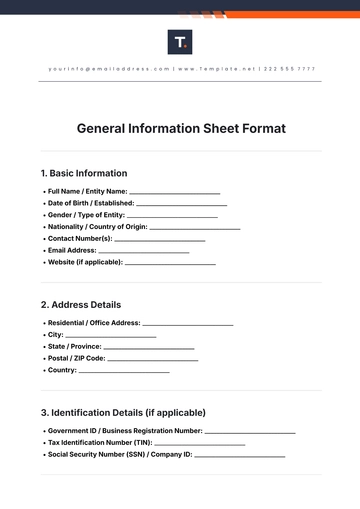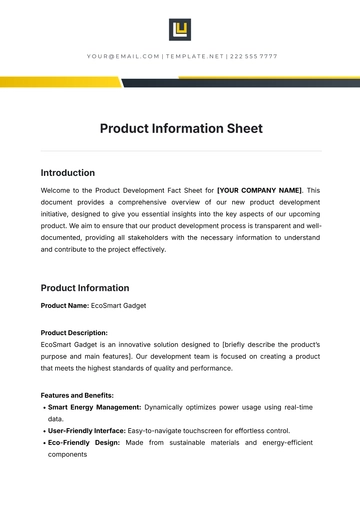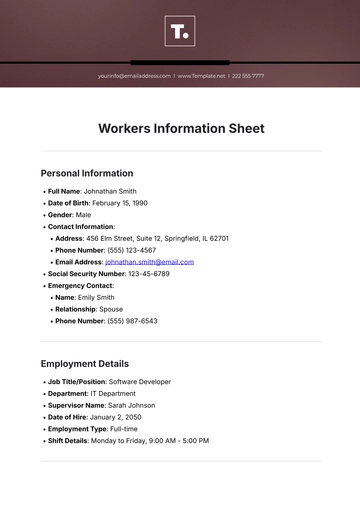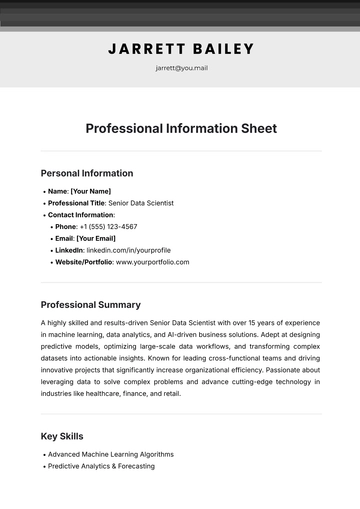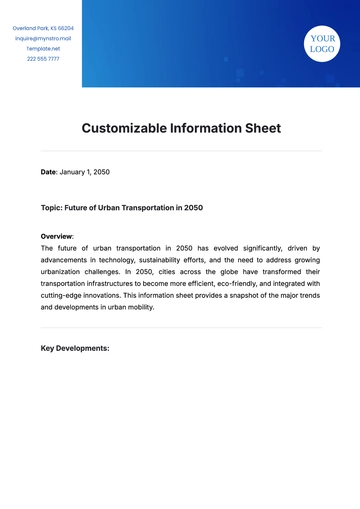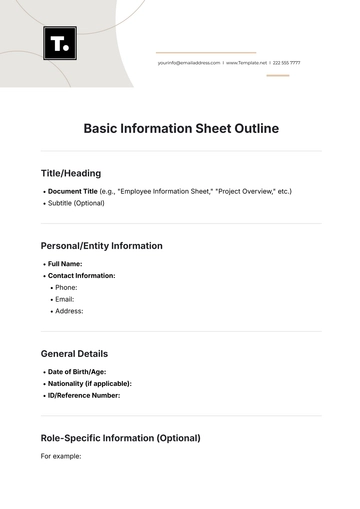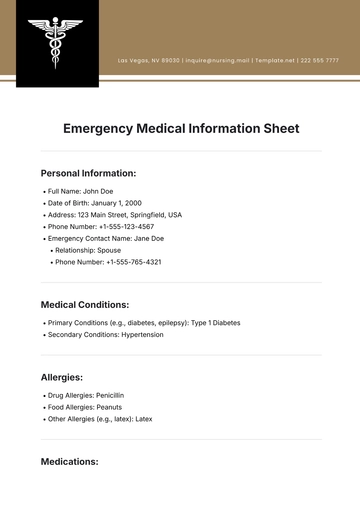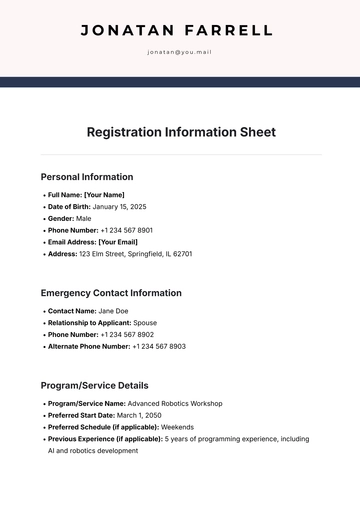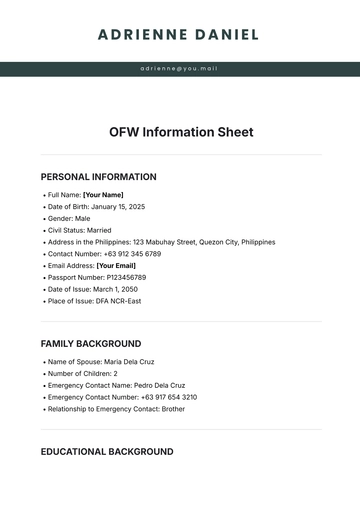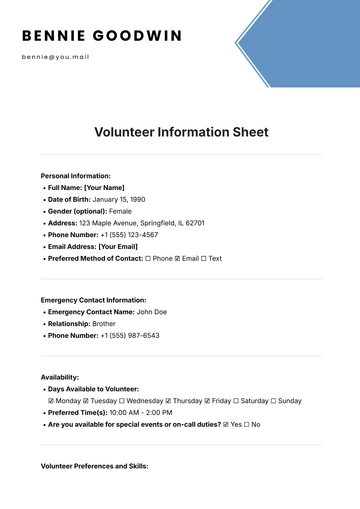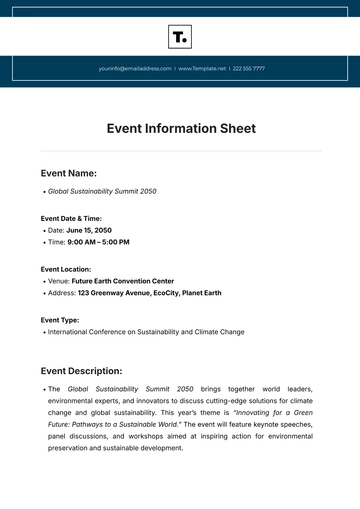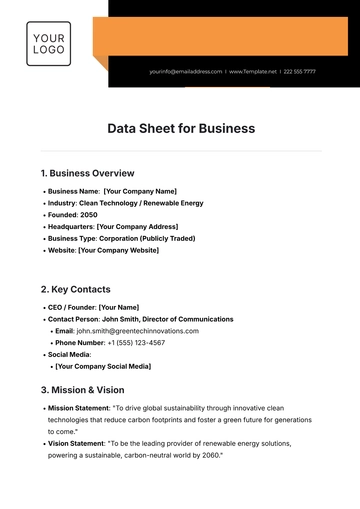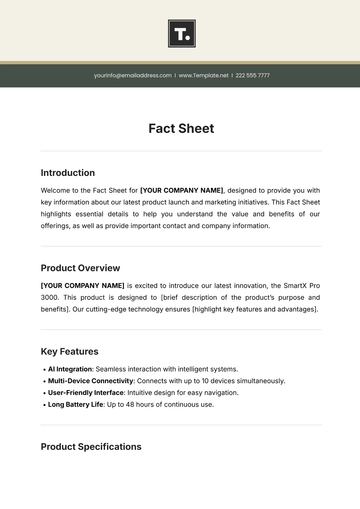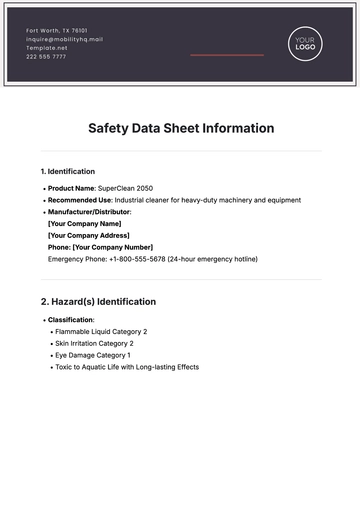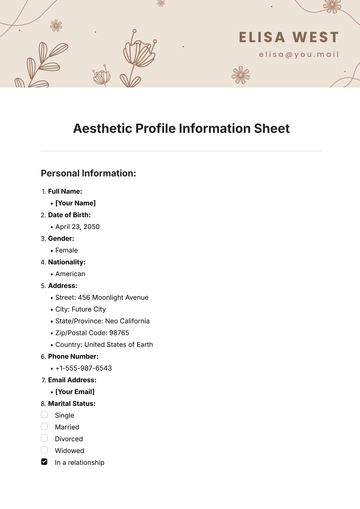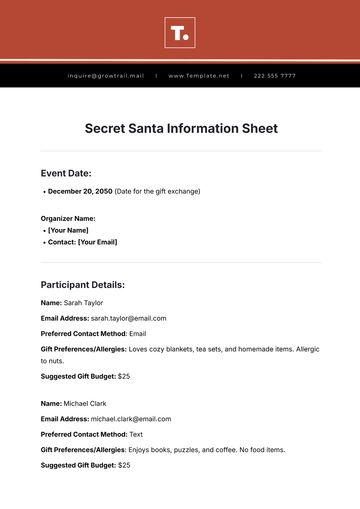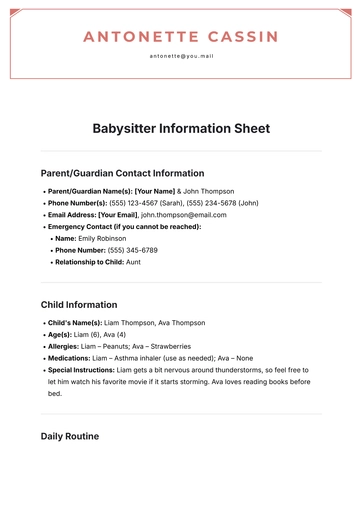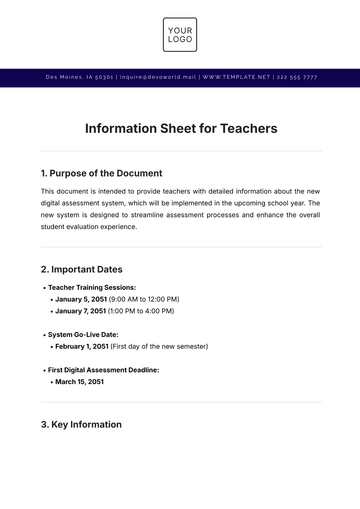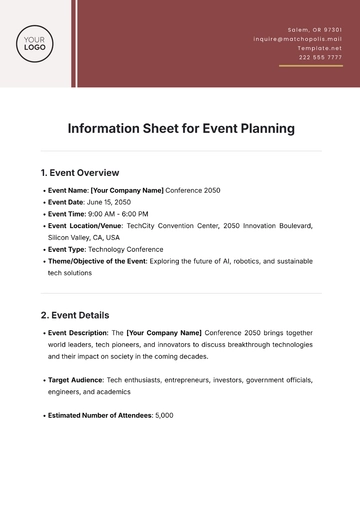Free Country Fact Sheet
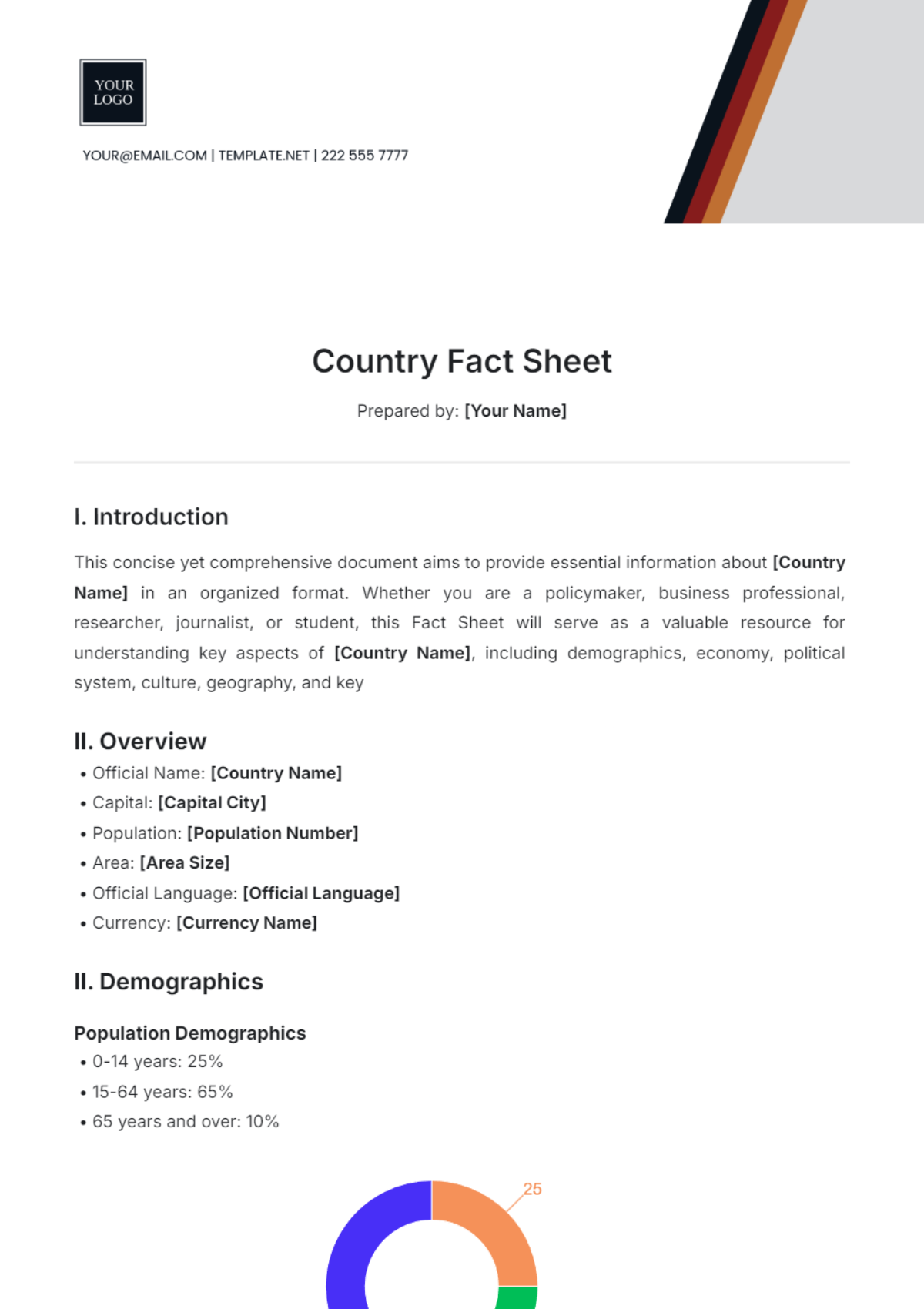
Prepared by: [Your Name]
I. Introduction
This concise yet comprehensive document aims to provide essential information about [Country Name] in an organized format. Whether you are a policymaker, business professional, researcher, journalist, or student, this Fact Sheet will serve as a valuable resource for understanding key aspects of [Country Name], including demographics, economy, political system, culture, geography, and key
II. Overview
Official Name: [Country Name]
Capital: [Capital City]
Population: [Population Number]
Area: [Area Size]
Official Language: [Official Language]
Currency: [Currency Name]
II. Demographics
Population Demographics
0-14 years: 25%
15-64 years: 65%
65 years and over: 10%
Ethnic Groups
Han Chinese: 92%
Zhuang: 1.3%
Hui: 0.8%
Manchu: 0.7%
Uyghur: 0.6%
Religions
Buddhism: 18%
Christianity: 5%
Islam: 2%
Folk Religion: 65%
Other/None: 10%
III. Economy
GDP (Gross Domestic Product): [GDP in USD]
GDP per Capita: [GDP per Capita in USD]
Main Industries:
Manufacturing: Produces electronics, textiles, machinery, and more for domestic and global markets.
Information Technology (IT): Develops computer hardware, software, and telecommunications services, driving innovation and competitiveness.
Automotive: Manufactures a wide range of vehicles and parts for global export.
Tourism: Offers diverse travel, hospitality, and entertainment services for domestic and international visitors.
Agriculture: Produces crops, livestock, forestry, and fisheries products for food and industry.
Exports:
Electronics: Major exporter of smartphones, computers, and industrial electronics.
Automobiles: Exports vehicles, parts, and accessories globally.
Machinery: Exports various machinery for manufacturing, construction, and agriculture.
Imports:
Petroleum Products: Imports crude oil and refined products for energy and industrial use.
Machinery and Equipment: Imports tools and equipment to support manufacturing and infrastructure.
Pharmaceuticals: Imports medicines and medical supplies for healthcare and research.
IV. Political System
Government Type: Democratic Republic
Head of State: [President Name]
Legislature: Bicameral Parliament - House of Representatives and Senate
V. Culture
Cultural Highlights: A rich and intricate tapestry consisting of traditional arts, along with various forms of music and dance.
Festivals and Celebrations: The Lunar New Year, the National Day, and the Mid-Autumn Festival.
Cuisine: A variety of distinct and flavorful dishes such as Peking Duck, Dim Sum, and Sichuan Hot Pot are included in the selection.
VI. Geography
Mountain Ranges
Himalayas: World's highest peaks including Mount Everest, spanning China, Nepal, India, Bhutan, and Pakistan. Influences regional climate and holds cultural significance.
Tian Shan: Renowned for alpine beauty and diverse ecosystems, it serves as a natural boundary in Central Asia and China's Xinjiang region.
Rivers
Yangtze River: China's longest river, vital for agriculture, transport, and hydroelectric power, flowing from Tibet to the East China Sea.
Yellow River: Known as "China's Sorrow" due to its historical floods, it supports agriculture and industry across arid and semi-arid northern China.
Climate
The region experiences a temperate climate characterized by clearly distinct seasons. During the summer months, the weather is typically warm and accompanied by a high level of humidity. In contrast, the winter season brings cold temperatures.
Natural Resources
Coal: Abundant in China, coal is a major source of energy and is used in electricity generation, steel production, and various industrial processes.
Iron Ore: Essential for steel production, iron ore is mined extensively in China and supports its manufacturing and construction industries.
Petroleum: China has significant reserves of petroleum, which is crucial for meeting energy demands, fueling transportation, and supporting various petrochemical industries.
Natural Gas: As a cleaner alternative to coal and petroleum, natural gas is increasingly important in China for heating, electricity generation, and industrial use.
VII. Key Contacts
Embassy/Consulate:
Embassy in [Country Name]: [Embassy Address, Phone, Email]
Consulate in [City Name]: [Consulate Address] [Phone] [Email]
Tourism Board:
Official Tourism Website: [Website URL]
Contact Email: [Tourism Board Email]
- 100% Customizable, free editor
- Access 1 Million+ Templates, photo’s & graphics
- Download or share as a template
- Click and replace photos, graphics, text, backgrounds
- Resize, crop, AI write & more
- Access advanced editor
Looking for a comprehensive Country Fact Sheet Template? Explore Template.net for an editable and customizable solution! Our Ai Editor Tool simplifies data personalization, including charts and graphics. Ideal for analysts, researchers, and educators needing concise country insights in one comprehensive document. Streamline your work and presentation processes efficiently with our user-friendly tools.
You may also like
- Attendance Sheet
- Work Sheet
- Sheet Cost
- Expense Sheet
- Tracker Sheet
- Student Sheet
- Tracking Sheet
- Blank Sheet
- Information Sheet
- Sales Sheet
- Record Sheet
- Price Sheet
- Plan Sheet
- Score Sheet
- Estimate Sheet
- Evaluation Sheet
- Checklist Sheet
- Bid Sheet
- Call Log Sheet
- Bill Sheet
- Assessment Sheet
- Task Sheet
- School Sheet
- Work From Home Sheet
- Summary Sheet
- Construction Sheet
- Cover Sheet
- Debt Spreadsheet
- Debt Sheet
- Client Information Sheet
- University Sheet
- Freelancer Sheet
- Bookkeeping Sheet
- Itinerary Spreadsheet
- Scorecard Sheet
- Run Sheet
- Monthly Timesheet
- Event Sheet
- Advertising Agency Sheet
- Missing Numbers Worksheet
- Training Sheet
- Production Sheet
- Mortgage Sheet
- Answer Sheet
- Excel Sheet
